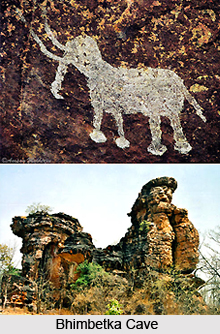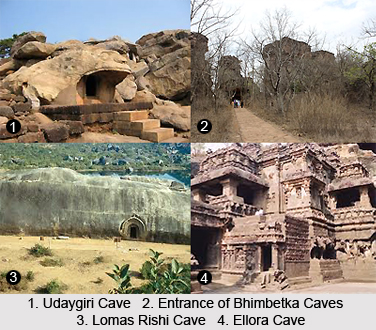 Rock shelters in India have unique story which marked the evolution of colonial, vernacular and contemporary art form. The elements of nature in the hills are beguiling and beautiful, challenging and charming. They create the fundamental environment, defines the spatial order and humans adapts to these forces. He also creates his habitat and shelter in consonance with the laws of nature. The use of space for architectural and the art are spontaneous, unconscious and surrounded with cultural ethos of the people, and is close to the roots of life. It is in this context that the concept of vernacular architecture can be discussed.
Rock shelters in India have unique story which marked the evolution of colonial, vernacular and contemporary art form. The elements of nature in the hills are beguiling and beautiful, challenging and charming. They create the fundamental environment, defines the spatial order and humans adapts to these forces. He also creates his habitat and shelter in consonance with the laws of nature. The use of space for architectural and the art are spontaneous, unconscious and surrounded with cultural ethos of the people, and is close to the roots of life. It is in this context that the concept of vernacular architecture can be discussed.
Shelter in the Hills
The lonely hut has always been the shelter in the primordial landscapes of the hills. From prehistoric days these huts have remained the same, and there haven`t been many changes in the form and structures of the same. Most of the essential human habitation is found in remote areas far away from cities and modern facilities. As per human nature, in the middle of loneliness and solitude, the spirit of survival and capacity to brave all adverse forces always exists.
 The homes and huts of the people living in usually have two rooms, one on top of another, is built with mud, stone and timber. The entire family cooks, sits, sleeps and shares its joys and pains. The hut is also their citadel against snow, rain and howling storms during the winter months. In the presence of more than one hut, a hamlet or commune actually develops. A temple also comes into existence. The people spend time decorating their houses and focal structures with ornaments, with their indigenous skills. Thus from a single hut structure a hamlet is born, and a stylized folk architecture is established. This is actually the first step towards the evolution of unique vernacular architecture for a given region.
The homes and huts of the people living in usually have two rooms, one on top of another, is built with mud, stone and timber. The entire family cooks, sits, sleeps and shares its joys and pains. The hut is also their citadel against snow, rain and howling storms during the winter months. In the presence of more than one hut, a hamlet or commune actually develops. A temple also comes into existence. The people spend time decorating their houses and focal structures with ornaments, with their indigenous skills. Thus from a single hut structure a hamlet is born, and a stylized folk architecture is established. This is actually the first step towards the evolution of unique vernacular architecture for a given region.
The vernacular architecture is a term which is commonly used in the modern times, and can be defined as spontaneous, uncultivated, anonymous, indigenous and popular architecture, which does not follow the mainstream architectural styles followed by the modern architects. Unlike modern architecture, the vernacular architecture does not at all go through any particular fashion cycles and is constant which cannot be improved and is immutable.
Art and Architecture of Rock Shelters
There are lots of factors which are responsible for lukewarm response of hill people towards modern architecture. The primary reason is the absence of the warm, human and handcrafted details that are a natural part of vernacular architecture. There are efforts made in introduce modern art form in the buildings by incorporating sculptures and murals. But the efforts fall flat since the art from used are often very abstract, which only strikes a chord among the rich and famous and leaves the rest in the dark. The main sensation towards appreciating an art work is "delight", which most of the modern and mew built-ups fail to evoke. So there are conscious efforts being made to promote vernacular art form for revival of interest in art.



















